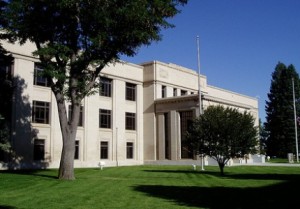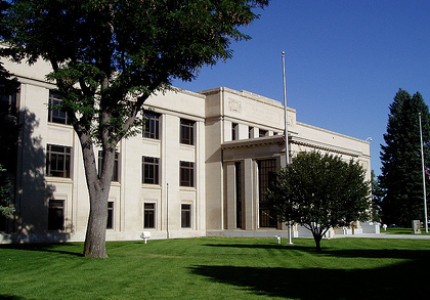 Wyoming looks set to require more deliberative sentencing hearings for juveniles convicted of murder, taking into account factors such as the defendant’s mental health. Like most under-18 defendants in the state, however, they will continue to go through adult court, advocates predict.
Wyoming looks set to require more deliberative sentencing hearings for juveniles convicted of murder, taking into account factors such as the defendant’s mental health. Like most under-18 defendants in the state, however, they will continue to go through adult court, advocates predict.
Wyatt Bear Cloud’s sentence to life in prison for a 2008 murder committed in Sheridan when he was 16 wasn’t fair, the U.S. Supreme Court ruled on Oct. 1, citing an earlier ruling that demands thoughtful sentencing hearings for youth on murder convictions. They told the state Supreme Court to do something else with him.
Nearly a month later, Wyoming’s Joint Judiciary Interim Committee approved a proposal to set the minimum juvenile sentence for first-degree murder at 25 years and to end cursory sentencing. The U.S. Supreme Court, in a string of decisions over the last few years, has told sentencing courts to consider juvenile offenders’ lack of maturity, mental health and other factors that may make them less culpable.
Bear Cloud was tried as an adult, as are most Wyoming minors, advocates suspect.
“Because our system is so fragmented, nobody is collecting the information that can paint the whole picture,” said Donna Sheen, director of the Wyoming Children’s Law Center, a nonprofit.
Some juvenile courts exist in the state, Sheen said, but “it is our belief for example, that there is a lot of over-prosecution in the municipal and circuit courts,” the same courts that try adult defendants.
That’s for offenses as slight as possession of alcohol by a minor, a crime in Wyoming.
“There are so many kids that go to detention, go to jail in Wyoming … for things they should not be in jail for: minor in possession of tobacco, minor possession of alcohol, skipping school,” said Linda Burt, director of the state’s ACLU chapter. Her office wants minors kept out of adult court.
According to federal statistics, in 2009, Wyoming courts reported hearing 738 juvenile cases of delinquency, that is, crimes; and 269 on status offenses, that is, offenses like school truancy that don’t apply to adults. In all of Wyoming, the population aged 10 to 17 numbered 56,100, suggesting as much as 1.8 percent of the whole age group met with the law in some way.
“We see some due process issues,” said Burt, such as “en masse” advisements of the right to trial by jury or to counsel. “Some of the children are not old enough to understand that,” she said, and they forego their rights.
She also calls Wyoming’s juvenile justice services a “hodgepodge” varying from county to county.
“If you have a very rich county like Campbell County that has a lot of oil money, you may have a very good system,” Burt said, noting the northeast Wyoming county jail’s juvenile pod, education and recreation programs. But in other places, juvenile hall consists of solitary confinement within an adult jail.
All that variation from county to county is one of her center’s biggest concerns, said Sheen. In addition to the variation and the over-prosecution that she suspects, she also said there’s an overall lack of guidance from the state.
“Diversion programs, non-court processes would be much more appropriate,” she said.
But both Burt and Sheen see little legislative appetite for a major overhaul of juvenile justice services.
Yet, at least one more tweak is expected next year: the Joint Judiciary Interim Committee has approved a bill making it easier for counties to win some state juvenile justice grants.
The Children’s Law Center plans to advocate an amendment requiring collection of statistics on courts and juveniles: what kind of cases come up, which court hears them, what’s the sanction and what’s the rate of reoffending?
“We want to build up a framework for measuring all that,” Sheen explained.
The next legislative session begins in January.
